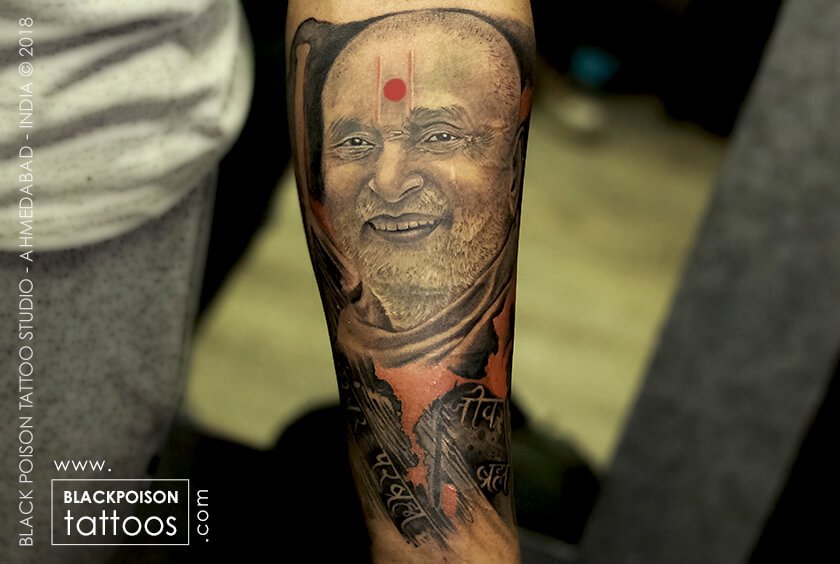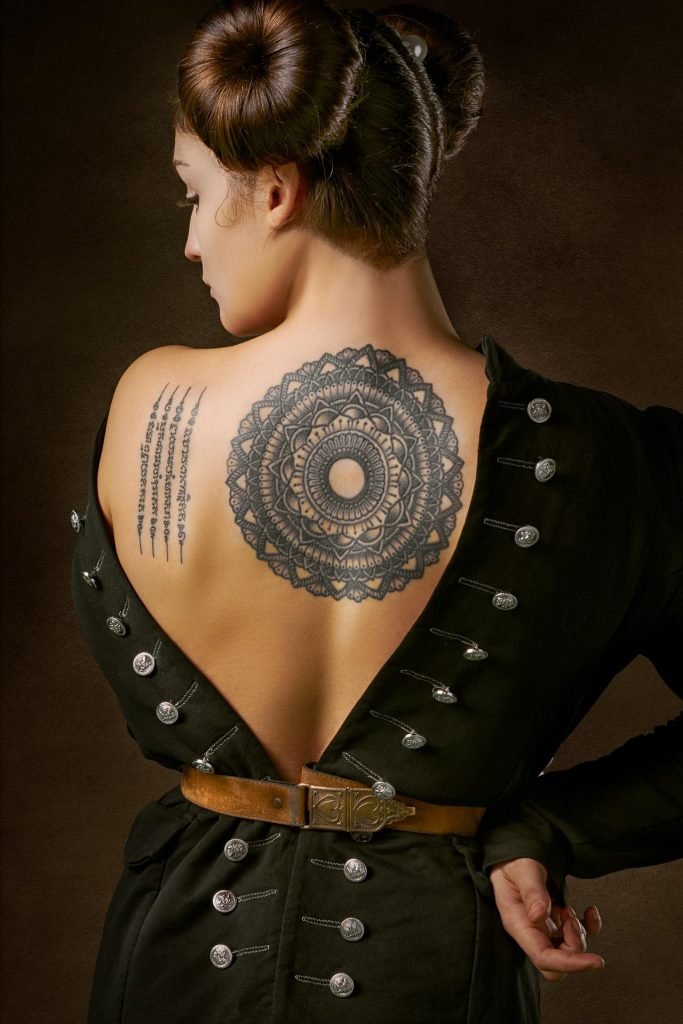The Five Eternal Elements
When Bhagwan Swaminarayan set out on His spiritual journey at eleven years of age, He halted only after getting a reply to the question He had asked all across India. On His quest, He asked about the five eternal elements as revealed in the Vedas. He found a reasonable answer in Loj from Ramananad Swami’s chief disciple, Muktanand Swami. He accepted Ramanand Swami as His guru and then established the Swaminarayan Sampraday in Gujarat. Bhagwan Swaminarayan describes these five eternal elements and their relationship in great detail throughout the Vachanamrut.
Pramukh Swami Tattoo Design,These five eternal elements are: Jiva, Ishwar, Maya, Brahma, and Parabrahma.
Jiva – The Soul
One’s true identity is not this human body, but the jiva that resides within it. The jiva, also called ‘atma’ or soul, is eternal – it cannot be destroyed. The jiva has no gender; it is neither male nor female. Bhagwan Swaminarayan discusses the nature of the jiva throughout the Vachanamrut. It is said to reside in our bodies in the same area as the heart. “Childhood, youth, old age, stoutness, thinness, birth and death are all aspects of the body.
On the other hand, being uncuttable, being unpierceable, not aging, being immortal, being the embodiment of gnan [wisdom], being the embodiment of bliss, and being characterized by eternal existence are all aspects of the atma; they should in no way be considered as belonging to the body.” The jiva is free and pure, but we believe that we are restrained by maya. Once we understand that we are not this body and worship Purna Purushottam Narayan, we realize that our jiva is free from the clutches of maya and is worthy of moksha. The very essence of the Brahma-Parabrahma spiritual journey is to believe one’s self to be the atma and not this body, to become atmarup, and to worship Purna Purshottam Narayan.
Ishwar – Divinities
Ishwar transcends the jiva. It is the next element above the jiva. These beings partake in the creation, sustenance, and destruction of each universe. Ishwars are conscious spiritual beings that have greater realization than jivas.
While the jiva must work to realize its divine presence within the human body, ishwar is aware of that divinity. There are infinite ishwars, and but they are all bound by maya. Just as Purna Purshottam Narayan controls the jiva, He also controls the ishwars. Like the jivas, ishwars too aim to surpass maya and attain moksha.
Maya – Ignorance
Maya is the ignorance that separates the jivas and ishwars from Brahma and Parabrahma. It is the desire that hinders a spiritual aspirant’s path to moksha. Maya directly translates to attachment for worldly objects. Maya is the instrument through which Parabrahma facilitates karma and moksha. Only when a devotee is able to overcome maya overcome the darkness of attachment to worldly objects is he or she able to attain moksha. Maya manifests from physical matter, and it is difficult for the jiva or ishwar to transcend. Bhagwan Swaminarayan has advocated the jiva to engage in constant bhakti or devotion to God. To move beyond maya and towards one’s liberation.
Aksharbrahma – The Eternal Abode
The gunatit sadhu, Aksharbrahma, is the pathway to God and to moksha. It is only through Aksharbrahma that a jiva can associate itself with God and understand Him well enough to seek complete refuge in Him, thereby bringing the jiva out of the darkness of maya and into the light of Parabrahma. IParabrahma – GodIn the Vachanamrut, Bhagwan Swaminarayan has described this Supreme God as all-knowing, all-powerful and yet compassionate. This Parabrahma governs all the other four elements of jiva, ishwar, maya and brahma. Swaminarayan devotees believe Bhagwan Swaminarayan to be Parabrahma. In the Vibhuti Yoga Adhyaya of the Shrimad Bhagavad Gita, Shri Krishna speaks of that Supreme God living and working through him. Bhagwan Swaminarayan in the Vachanamrut says that Purna Purushottam Narayan resides in Akshardham and visits this Earth to establish dharma for the sake of His devotees. He is always present in human form (pragat).




